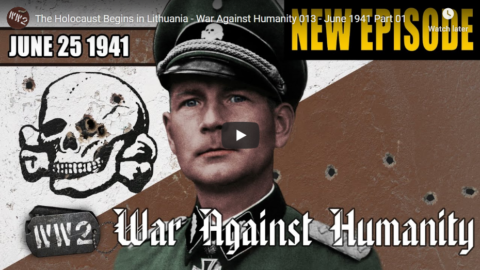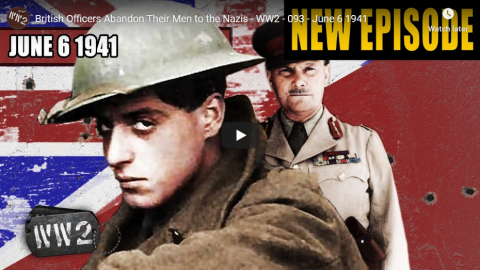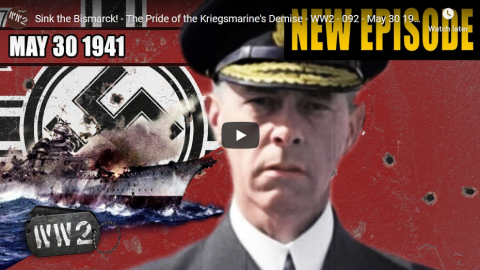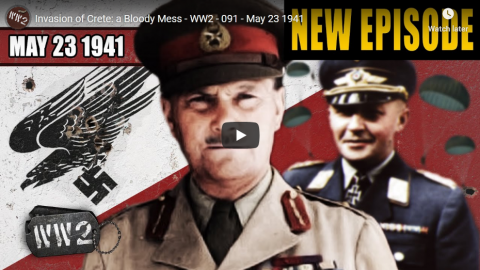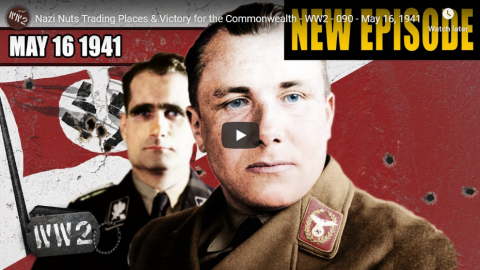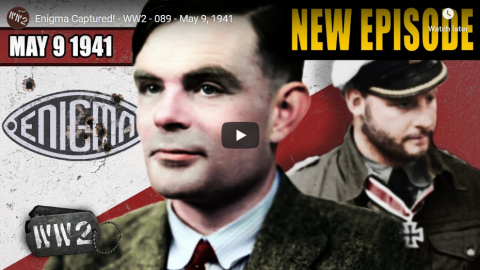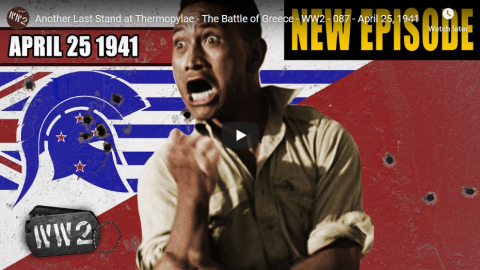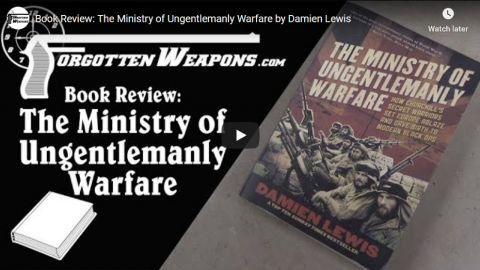World War Two
Published 25 Jun 2020The German Fallschirmjäger target the Cretan civilian population as they take the island with big losses. But the War Against Humanity intensifies dramatically as Operation Barbarossa is launched on 22nd June, 1941.
Join us on Patreon: https://www.patreon.com/TimeGhostHistory
Or join The TimeGhost Army directly at: https://timeghost.tvFollow WW2 day by day on Instagram @World_war_two_realtime https://www.instagram.com/world_war_two_realtime
Between 2 Wars: https://www.youtube.com/playlist?list…
Source list: http://bit.ly/WW2sourcesHosted by: Spartacus Olsson
Written by: Spartacus Olsson and Joram Appel
Director: Astrid Deinhard
Producers: Astrid Deinhard and Spartacus Olsson
Executive Producers: Astrid Deinhard, Indy Neidell, Spartacus Olsson, Bodo Rittenauer
Creative Producer: Joram Appel
Post-Production Director: Wieke Kapteijns
Research by: Joram Appel and Valantis Athanasiou
Edited by: Mikołaj Cackowski
Sound design: Marek Kamiński
Map animations: Eastory (https://www.youtube.com/c/eastory)Colorizations by:
Dememorabilia – https://www.instagram.com/dememorabilia/
Carlos Ortega Pereira, BlauColorizations – https://www.instagram.com/blaucoloriz…
Julius Jääskeläinen – https://www.facebook.com/JJcolorization/
https://www.flickr.com/photos/2215569…
Norman Stewart – https://oldtimesincolor.blogspot.com/Sources:
Detail of Mural Depicting 1919 Amritsar Massacre – Jallianwala Bagh – Amritsar – Punjab – India, courtesy Adam Jones https://flic.kr/p/kj6riR
RIA Novosti archive, image #965
Bundesarchiv
Narodowe Archiwum Cyfrowe
IWM E 3064E
Vilna Gaon State Jewish Museum
from the Noun Project: Policeman by karina, suit by Gabriel Ciccariello, manufacturer by priyanka, land investment by Gan Khoon Lay, soldier by Andi Nur Abdillah, classroom by Gan Khoon Lay, prisoner by carlotta zampini, interrogation by Gan Khoon Lay, Tortured Man by Gan Khoon Lay, sitting at desk by IYIKONBibliography:
“NKVD and Central Committee of the Soviet communication” as documented in: The great west Ukrainian prison massacre of 1941, a sourcebook – Ksenya Kiebuzinski, Alexander Motyl
Alexander Statiev, The Soviet Counterinsurgency in the Western Borderlands 167-168
“Lithuania in March 1941: An American Diplomat’s Report”, In: Journal of Baltic Studies 26:2 (1995) 161-158.
Herman Kruk, The Last Days of the Jerusalem of Lithuania: Chronicles from the Vilna Ghetto and the Camps, 1939-1944 (2002)
Stephan D. Yada-Mc Neal, Places of Shame – German and Bulgarian war crimes in Greece 1941-1945, Books on Demand, 2018
Antony Beevor, Crete 1941: The Battle and the Resistance, Greek edition, Athens, 2004.
Fleischer, Hagen, “Battle of Crete”, in Crete, History and Civilization, vol. 2 (Greek), Cretan TEDK, Heraklion, 1988.
Sanoudaki-Sanoudou Antonis, May 2011, German reprisals in the Battle of Crete (Greek), 70 Years from the Battle of Crete, pp. 89-112Soundtracks from the Epidemic Sound:
Skrya – “First Responders”
Flouw – “Endlessness”
Jon Bjork – “For the Many”
Johannes Bornlof – “Deviation In Time”
Andreas Jamsheree – “Guilty Shadows 4”
Cobby Costa – “From the Past”
Farell Wooten – “Blunt Object”
Philip Ayers – “Trapped In A Maze”
Johannes Bornlof – “The Inspector 4”
Gunnar Johnsen – “Not Safe Yet”Archive by Screenocean/Reuters https://www.screenocean.com.
A TimeGhost chronological documentary produced by OnLion Entertainment GmbH.
From the comments:
World War Two
2 hours ago (edited)
We apologize deeply for the mess up with the listing of countries at the opening – somehow the errors in the list of invaders slipped through the fact check. To be clear: neither Bulgaria, nor Slovenia (obviously) invaded the USSR in June 1941. We’re working on fixing it in some way with YouTube’s help.At the end of June 1941 the civilian population in what is today Poland, Romania, Ukraine, Belarus, Latvia, Lithuania, and Estonia are facing two lethal enemies. The political police of the USSR – the NKVD, and the invading German Army accompanied by the Nazi killing squads of the SS. That’s simply how it is. That it will get even worse than it is during the last week of June, especially through horrors committed by one of these sides does not change that fact. Because of the importance of these events to humanity, and the difficulty we all face to not equivocate who did what, we would like to remind you that we use a chronological format, that we do not make analytical commentary that looks to what will happen, but let you discover the events as they evolve.

